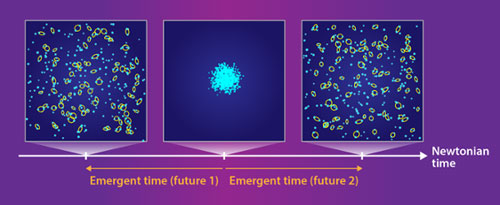Postdoctoral fellow's work featured by the American Physical Society
Author: UNB
Posted on Nov 1, 2014
Category: News and Events
Postdoctoral researcher Tim Koslowski's latest research on the arrow of time in gravitational systems (in collaboration with Julian Barbour and Flavio Mercati) has been featured on the American Physics Society's Physics website.
From the article:
The fundamental laws of physics, we believe, do not depend on the direction of time. Why, then, is the future so different from the past? The origin of this “arrow of time” has puzzled physicists and philosophers for more than a century, and it remains one of the fundamental conceptual problems of modern physics. Although a preferred direction of time can occur in models of physical systems, this typically happens only if one inserts very special initial conditions. Julian Barbour at the University of Oxford and his colleagues have now shown this tinkering isn’t necessary to produce an arrow of time in a system of masses interacting via Newtonian gravity. They demonstrate that the evolution of this surprisingly simple system almost always contains a unique moment of lowest “complexity,” a point they identify as a “past” from which two distinct (and more complex) “futures” emerge. [Read more...]

